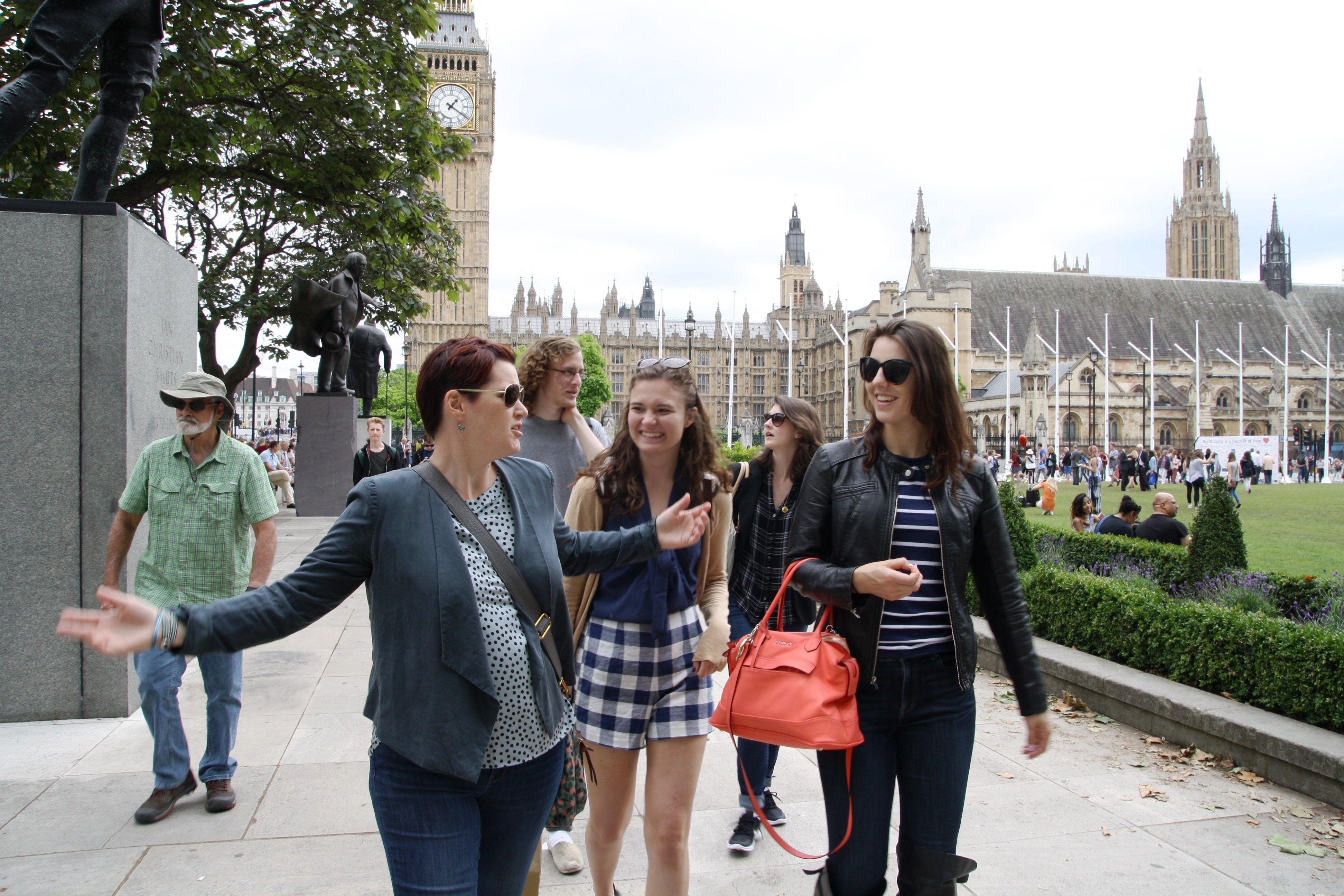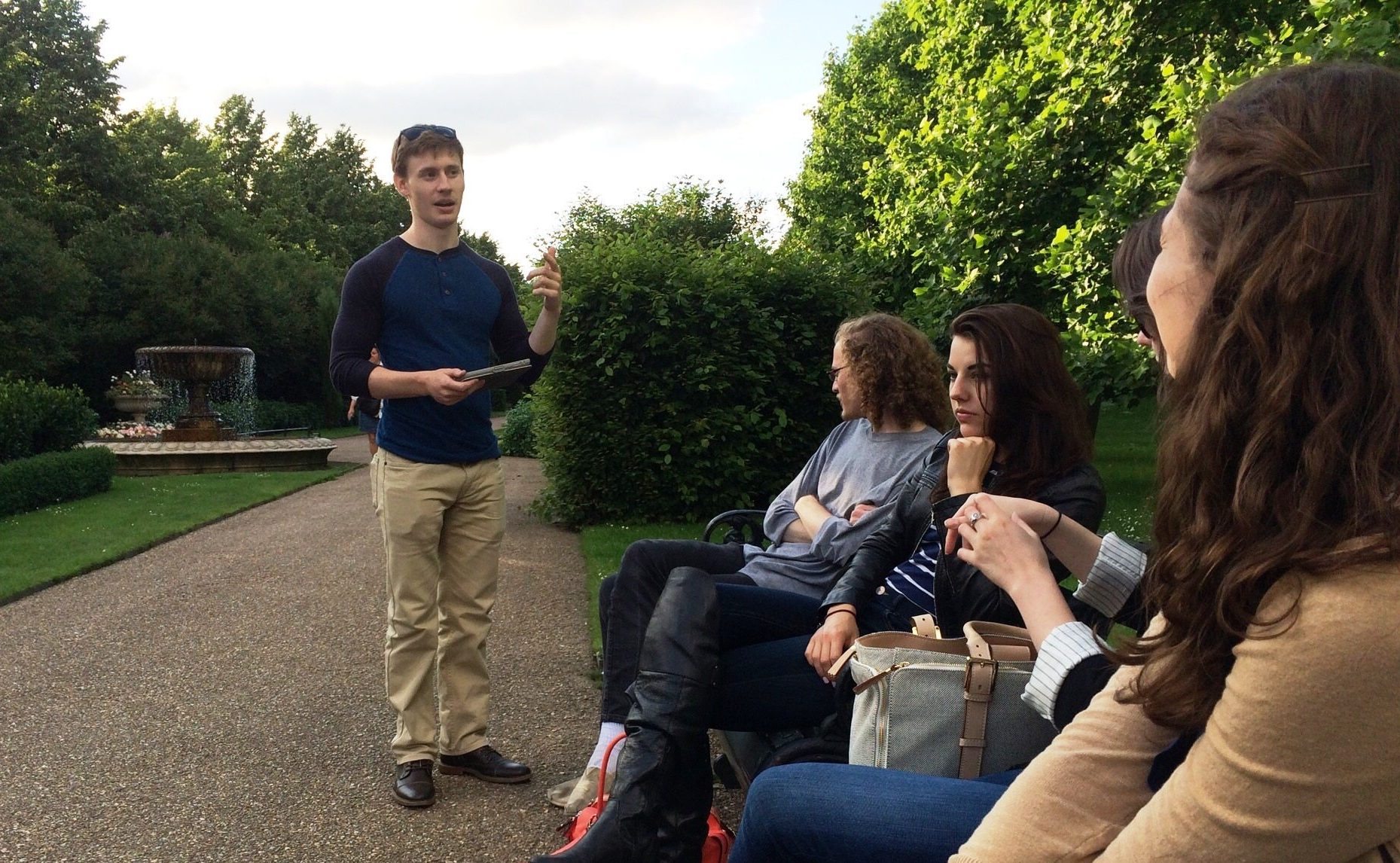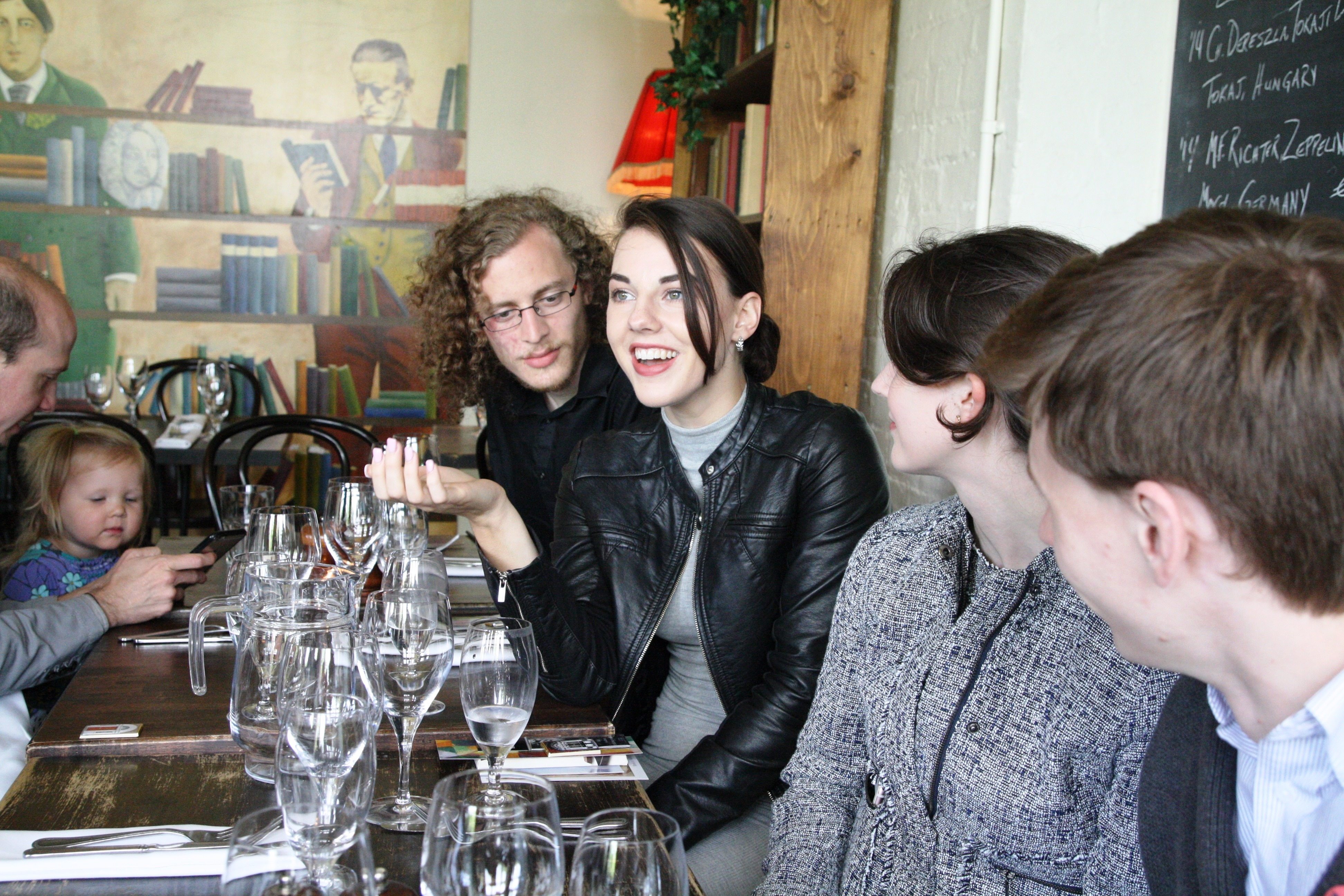This summer, the Drs. Terry (Dr. Sarah Terry, assistant professor of English and Comparative Literature; and Dr. James Terry, lecturer in Modern Languages) had the privilege and pleasure of leading a tremendous group of students on a short-term study abroad trip to London and Dublin.
These two-week study abroad trips are a longstanding part of Oglethorpe’s growing slate of study abroad programs, and the two I have taught have been among the most rewarding experiences of my career. Not only did we get to prepare intensively prior to departure, working through a series of readings and preparatory assignments in advance of our trip, but we got to build on that momentum and use the cities and the institutions of London and Dublin as our classroom to explore what we had prepared for in the abstract.

At Westminster Abbey: Katherine Carey, Evan Drew, Peter Ramsey, Ines Kausche, Meredith Myers
Our group of students ranged from sophomores to seniors, and represented a variety of majors and minors, from English to Theatre to Philosophy to an Individually Planned Major in Music and the Human Mind. Some of the students took my class, “Modernism and Modern Identity: Walking and Writing London and Dublin,” and some took Dr. J. Terry’s “Intersections of Roman and Celtic Mythology and Legend” course, and one ambitious student took both. Regardless of their official enrollment status, all of the students traveled together and learned from both professors’ lectures, site visits, and assignments, and especially from each other.
In my course, students read a series of texts from the turn of the twentieth century about cities in general, many of which posit arguments about the relationship between the metropolis and the psychology of its inhabitants. We then moved to Baudelaire’s “The Painter of Modern Life” as one of the centerpieces of our course, thinking about the relationship between visual art and conceptions of modernity, and thinking about the figure of the flâneur—one who observes city life aesthetically from a particular kind of distance. I asked the students to try their hand at the act of flânerie in Atlanta, and then to try this explicit way of engaging with London and Dublin by comparison. Particularly for students who have grown up in and around Atlanta, or any other city-as-urban-sprawl in the United States, it is a completely new experience to engage with a city through the act of walking. It doesn’t matter how much you warn the students to prepare for a great deal of walking—the reality of covering 5-10 miles a day in a major metropolis isn’t something you can ever really prepare for. Yet I would venture to guess that these daily treks are among the students’ most memorable accomplishments.

Dr. S. Terry lectures on the go at the start of the Mrs. Dalloway walking tour
Everything we did came back to these larger questions of national and personal identity construction. In my course, we focused these questions on the modern city: what does it mean to be “modern”? How is modernity represented in literature and other arts, and how does art intersect with politics in this regard? What are some of the ways national institutions such as museums and parks seek to represent and even define national identity?
One of the central tasks the students were assigned while on the trip was to lead a series of walking tours that engaged with these questions in our primary course texts: Joseph Conrad’s The Secret Agent, Virginia Woolf’s Mrs. Dalloway, and James Joyce’s Dubliners. These are texts I teach frequently, and which are very much linked to modern, urban life. But something akin to a magical transformation takes place when you have the opportunity to teach texts which are so tied to place in these cities themselves. Part of what I wanted the students to discover was just how much getting an intimate sense of the terrain described in the texts would enhance and affect their understanding of the worlds these authors describe. Even more importantly, I wanted them to come away with a sharp sense of why the city, and its “traditional” rural and agrarian opposites, play such a central role in our understanding of what it means to be modern.

Evan Drew ’17 leads the group in a discussion of Mrs. Dalloway in Regent’s Park
Over the course of the trip, I watched these already astute readers become amazingly insightful observers of their surroundings, both what they were expected to observe, and what they observed despite those carefully curated expectations. Our students were encouraged to be independent, and on that front they far surpassed our wildest expectations. Not only did they learn about the sites we visited, but they demonstrated an increased capacity to think critically about how these sites were presented to them. For me, this is the essential difference between traveling abroad and studying abroad: students did not just visit the National Gallery and appreciate its fine collection of Impressionist art; they analyzed what such a collection, and how it is framed for the observer, might contribute to public discourse on the visual arts, and even the status of Britain as a nation.

A fantastic farewell dinner at The Winding Stair (named after a Yeats collection – note James Joyce and Oscar Wilde looking on)
Much of what ended up being the most profound or memorable experiences of the trip were completely unplanned, and instead resulted from lucky timing, such as being in London when the Brexit vote passed and in Dublin during the centenary of the 1916 Rebellion, or circumstances outside of our control, such as the very Irish (i.e. wet) weather we experienced that forced our walking tour inside a pub of great literary and historical significance. Ultimately, it is these experiences that make study abroad so profoundly moving, which is why they are what students will most remember, as you can read in each of their final reflections.
Students were asked to “describe and reflect on your favorite educational experience,” and to “relate a meaningful moment from one of the course readings to a meaningful moment from your experience in London or Dublin.”
Katherine Carey ’17: A passage from Virginia Woolf’s Mrs. Dalloway, connected to a moment in a Dublin pub
Evan Drew ’17: A passage from Joseph Conrad’s The Secret Agent, connected to a moment in the Tate Modern
Meredith Myers ’18: A poem by Eavan Boland, connected to larger questions of Irish national identity explored throughout the course
Peter Ramsey ’17: A passage from Mrs. Dalloway, connected to an experience in the British Museum
View more photos:

